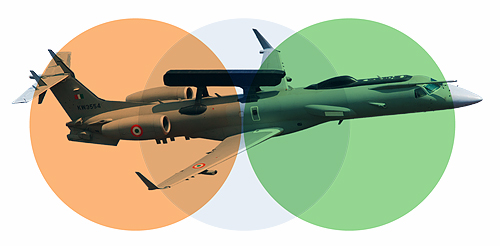INDIAN ARMED FORCES CHIEFS ON OUR RELENTLESS AND FOCUSED PUBLISHING EFFORTS

The insightful articles, inspiring narrations and analytical perspectives presented by the Editorial Team, establish an alluring connect with the reader. My compliments and best wishes to SP Guide Publications.

"Over the past 60 years, the growth of SP Guide Publications has mirrored the rising stature of Indian Navy. Its well-researched and informative magazines on Defence and Aerospace sector have served to shape an educated opinion of our military personnel, policy makers and the public alike. I wish SP's Publication team continued success, fair winds and following seas in all future endeavour!"

Since, its inception in 1964, SP Guide Publications has consistently demonstrated commitment to high-quality journalism in the aerospace and defence sectors, earning a well-deserved reputation as Asia's largest media house in this domain. I wish SP Guide Publications continued success in its pursuit of excellence.
- The layered Air Defence systems that worked superbly, the key element of Operation Sindoor
- Operation Sindoor | Day 2 DGMOs Briefing
- Operation Sindoor: Resolute yet Restrained
- India's Operation Sindoor Sends a Clear Message to Terror and the World – ‘ZERO TOLERANCE’
- Japan and India set forth a defence cooperation consultancy framework, talks on tank and jet engines
Must Invest in EW Capabilities
Indian Air Force (IAF) must continue to invest in the development and deployment of advanced electronic warfare systems to remain competitive in a rapidly evolving global security landscape

Electronic warfare (EW) systems play a critical role in modern air force operations, and are essential for gaining and maintaining tactical advantages on the battlefield by providing critical capabilities for disrupting or neutralising enemy electronic systems and communications. By disrupting enemy radar systems or intercepting their communications, air forces can gain a significant advantage in both offensive and defensive operations. Electronic warfare systems can include a range of different technologies, such as radar jamming, signal intelligence, and electronic countermeasures.
Earlier this year, in an exclusive interview to SP’s Aviation on the occasion of Aero India 2023, Air Chief Marshal V.R. Chaudhari, Chief of the Air Staff, had said that, “there is a need to equip all aircraft with EW self-protection systems like Radar Warning Receivers, Airborne Self Protection Jammers (ASPJs), Missile approach and warning systems and Laser Warning Systems. Such self-protection measures also need to be complimented with an offensive EW capability.”
The Indian Air Force (IAF) has made significant strides in developing and deploying advanced EW systems in recent years. In 2019, the IAF successfully test-fired the Astra Beyond Visual Range Air-to-Air Missile (BVRAAM), which incorporates advanced electronic countermeasures (ECM) to defeat enemy radar systems. The IAF has also acquired a range of other advanced EW systems, including the DRDO-developed Netra airborne early warning and control (AEW&C) system, which is equipped with advanced ESM and ECM capabilities.
Overall, the IAF’s EW capabilities are likely to continue evolving and improving over time, as the force seeks to stay ahead of evolving electronic threats and maintain a tactical advantage on the battlefield. However, the effectiveness of these systems will ultimately depend on a range of factors, including the IAF’s ability to effectively integrate them into broader air force operations and adapt to rapidly changing electronic threat environments.
There are several areas in which the IAF could potentially invest to improve its EW capabilities and gain a tactical advantage:
- Advanced Electronic Attack (EA) Systems: The IAF could potentially invest in advanced electronic attack systems, such as high-powered jamming systems and directed energy weapons, to disrupt and neutralise enemy radar and communications systems.
- Cyber Warfare Capabilities: The IAF could potentially develop and deploy advanced cyber warfare capabilities, which would allow it to disrupt and destroy enemy computer systems and networks.
- Advanced Electronic Warfare Support (ES) Capabilities: The IAF could potentially invest in advanced electronic warfare support capabilities, such as advanced signal processing and analysis tools, to improve its ability to detect and locate enemy radar and communications systems.
- Advanced Electronic Countermeasures (ECM) Capabilities: The IAF could potentially invest in advanced ECM capabilities, such as advanced encryption and decoy techniques, to protect its own electronic systems and communications from enemy attack.
- Integrated EW Operations: IAF could focus on improving its ability to integrate offensive and defensive EW systems into broader air force operations, in order to maximise their effectiveness and gain a tactical advantage on the battlefield.
It is important for the Indian Air Force (IAF) to focus on enhancing its Electronic Warfare (EW) capabilities to stay ahead in today’s modern warfare environment. EW capabilities are increasingly becoming critical for modern air forces to gain and maintain a tactical advantage over their adversaries, as electronic systems and communications are critical to modern military operations.
As technology continues to evolve and threats become more sophisticated, the IAF needs to continue investing in advanced EW capabilities and integrating them into broader air force operations to maintain its strategic edge. This requires ongoing research and development, as well as investment in personnel training and development, to ensure that the IAF is wellequipped to counter emerging electronic threats and maintain its position as a leading modern air force.
The specific EW capabilities that the IAF needs to enhance will depend on a range of factors, including its strategic priorities, budgetary constraints, and technological development. However, by investing in advanced EW technologies and integrating these capabilities into broader air force operations, the IAF can work to maintain a tactical advantage over its adversaries and protect its national security interests.
The IAF operates in a region with multiple potential adversaries, each with its own advanced military capabilities. To maintain its security interests and protect against these potential threats, the IAF needs to continuously upgrade and enhance its EW capabilities to stay ahead of the curve and be able to counter the evolving electronic threats effectively.





